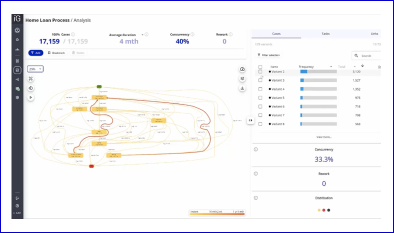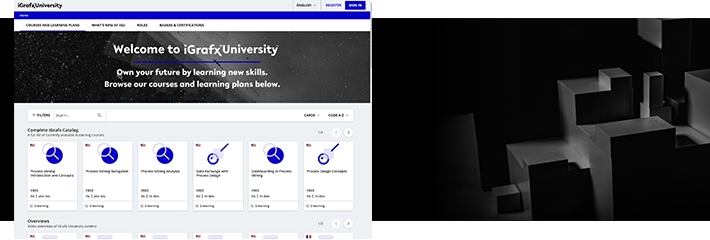In today’s complex business landscape, adopting a process intelligence platform has become increasingly vital, though potentially daunting. New technology brings with it massive potential for improvement in the way things are done, but also questions about how it will impact people, processes, and existing technology during digital process transformation.
To guide you through this transformative journey of digital process transformation, we’ve teamed up with implementation experts from our partner, SCOPE8. Together we’ve compiled five actionable steps to ensure your organization’s success.
1. Consensus View: Digital Process Transformation and Process Diagrams
Securing agreement among key process stakeholders is paramount. Attaining a validated representation of your current processes marks a significant milestone and lays the groundwork for your journey towards digital process transformation. These maps, typically crafted using tools like Visio or Lucidchart, offer a visual depiction of your processes, offering valuable insights into their interactions with other processes during digital process transformation.
If your organization already possesses accurate process maps, you’re off to a promising start. « It’s concerning how many companies lack validated documentation of their current processes. Often, these processes exist solely in the minds of key stakeholders, posing risks to business continuity and compliance, » remarks Volker Zies, SCOPE8. If you’re yet to create such process visualizations, iGrafx provides a state-of-the-art user experience for creating these maps.
2. Identify Pain Points & Improvement Ideas
Even as we align on our current processes, it’s natural for inefficiencies and areas ripe for improvement to emerge. Have you noticed any pain points or areas where things could run smoother? Capturing these pain areas and improvement suggestions is a swift yet impactful endeavor. Not only does it affirm to stakeholders that their input is valued, but it also aids in shaping optimized future processes. This demonstrates to stakeholders involved in future process enhancements that their insights and suggestions are pivotal in fostering change.
3. Transition to Business Process Models
As we delve deeper into the realm of digital transformation, the evolution of process diagrams into comprehensive business process models becomes imperative. Yet, this transition poses its own set of challenges, particularly when it comes to converting existing diagrams into these models. Have you encountered any hurdles in aligning your diagrams with BPMN standards? It can indeed be a daunting task, especially if they don’t readily conform to the required format during digital process transformation.
In such scenarios, the idea of getting everything « optimization ready » may feel overwhelming. Some businesses might even consider bypassing the process altogether, potentially missing out on the significant benefits of process modeling. Fortunately, with the introduction of iGrafx’s Process360 Live platform, this transition is made smoother. Automated conversion features pave the way for transforming diagrams into BPMN approximations, laying a solid foundation for process intelligence and optimization. Now that you’ve established the groundwork for digital process management, what are your thoughts on unlocking its full potential in your organization?
4. Process Analytics & Senior Management Engagement
With digitally modeled processes at our disposal, we’re granted powerful tools for visualizing and analyzing our operations. This offers a deeper understanding of our process landscape, revealing potential areas for improvement during digital process transformation. « By tapping into concrete process insights and tangible Proof of Values, we can effectively involve senior leadership, showcasing the tangible benefits of optimizing our processes, » as highlighted by Volker Zies.
Presenting opportunities tied to process intelligence, whether through Proof of Value or customized Business Cases, in a format tailored to our company’s needs, underscores its significance compared to other IT initiatives. How do you envision using these insights to foster collaboration and support from senior leadership within our organization?
5. Governance for Process Intelligence
Given the proven business value derived from process enhancement endeavors, establishing transparent governance mechanisms becomes essential. A methodical approach, with oversight directed towards the CFO, ensures ongoing adaptation and value provision. Start by selecting a handful of end-to-end business processes.
Identify, quantify, and implement improvement and automation opportunities using the functionalities offered by iGrafx’s Process360 Live platform, gradually expanding the scope of processes over time. For larger organizations, establishing a Process Intelligence Centre of Excellence can serve as a driving force for fostering enduring adaptation and value provision across the entire organization. With your processes integrated into the iGrafx Process360 Live platform, you’re also just a few clicks away from accessing the remarkable real-time monitoring, diagnostics, and automation capabilities provided by iGrafx’s process mining.
Are you ready to embark on your digital process transformation journey? Contact us today to learn more about how we can support your organization every step of the way.





